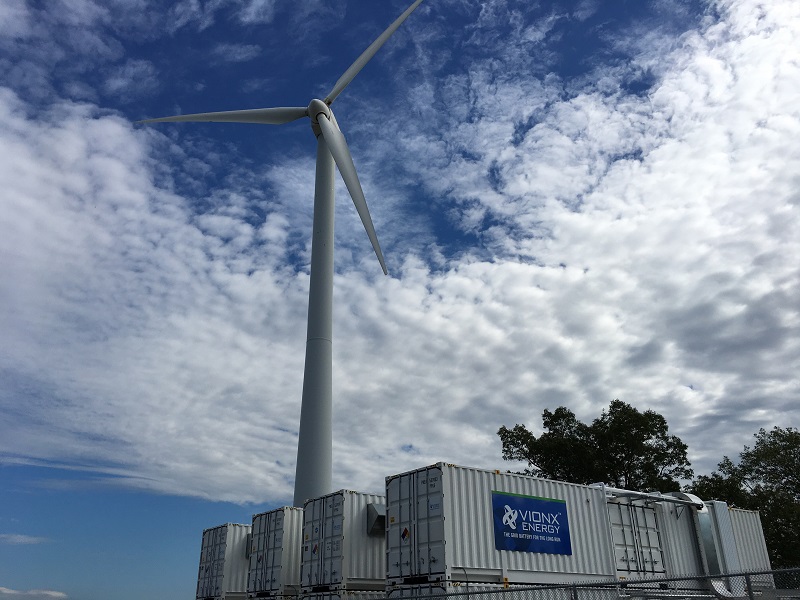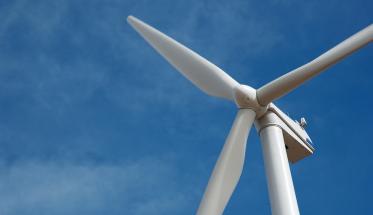Under a hot October sun on the campus of Holy Name Junior/Senior High School, John Orr raised a hand toward the spinning blades of the 600 kW wind turbine behind him.
“Do you hear that lovely sound?” asked Orr, director of sustainability at WPI. “The whoosh, whoosh, whoosh of clean energy being generated above our heads?”
 The wind turbine and energy storage system located at
The wind turbine and energy storage system located at
Holy Name.
Orr, along with Vionx Energy board member Robert F. Kennedy Jr., commissioner of the state's Department of Energy Resources Judith Judson, and representatives from National Grid, recently gathered at Holy Name to witness a demonstration of the school’s new multi-hour, battery-based energy storage system (ESS). The ESS, built in partnership with WPI, National Grid, and Vionx Energy, will capture and store the power generated by Holy Name’s wind turbine. The stored energy will be used to help keep the school powered—even at times without wind.
Located at the base of the wind turbine, the Vionx ESS will also help National Grid test energy storage impacts to the system and enable improvements for future renewable energy system design.
WPI’s involvement in the project began in 2004, when an Interactive Qualifying Project (IQP) team reviewed the financial challenges Holy Name faced in purchasing electricity. Instead of electricity from the grid, which cost the school $200,000 a year, Holy Name sought to invest in a cheaper, cleaner energy solution, and decided on wind power. The IQP team of Brian Foley ’07, Tyler Forbes ’07, Hans Jensen ’07, and Adam Young ’07 constructed an anemometer system (to measure the wind speed and determine if the school’s location was suitable for a wind turbine) on Holy Name’s roof, collected data, and researched the feasibility of a wind turbine, providing support for the application to federal agencies on behalf of Holy Name, which led to a grant approval for the project.
Since the installation of the wind turbine, Holy Name has generated 5,710,000 kW hours of electricity, saving $160,000 to $165,000 in energy costs per year.
Kennedy, an active environmentalist, said the ESS project is a template for the country, and a model of clean energy usage for the rest of the world.
“Nature is the infrastructure of our communities,” he said. “If we want to provide our children with opportunities for prosperity and good health, we need to protect the air we breathe and the water we drink. That gives us the life we want to live.”
This and other collaborations between Holy Name and WPI provide both Holy Name and WPI students with real-world STEM learning opportunities. “This success is a reason why, at WPI, we emphasize project-based learning,” Orr says. “It gives me great optimism for the future.”
- By Jessica Messier


